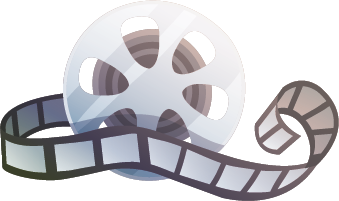Description

The Toastmaster’s role in the meeting is to act as the Master of Ceremonies (MC). As the major role of the meeting, it can be very rewarding and exciting. The Toastmaster is the “face” of Toastmasters to any visitors to the meeting. It is important to set a positive tone.
The requirements for the Toastmaster role may vary for each Program/Club. Central to this role are:
- Get the meeting started by describing the meeting format.
- Introduce the various roles or functionaries and invite them to explain their roles.
- Initiate applause at an introduction of a person coming to the stage (or online equivalent), and after the presentation of a role.
- Manage the various sections of the meeting, keeping them on time.
- Introduce the major participants in the meeting and give control of the meeting, with applause and a handshake (or online equivalent), to each as required.
- Introduce each speech Evaluator who introduces a Speaker.
- Request time for comments after each speaker.
- Introduce Table Topics Master for their section of the meeting.
- Monitor to keep this section on time.
- Introduce General Evaluator for their section of the meeting.
- Ensure control of the meeting returns to the Presiding Officer for closing.
In many programs/clubs, the Toastmaster may also do the following:
- Choose a theme for the meeting and publicize it prior to the meeting.
- Ensure that all roles are filled prior to or at the beginning of the meeting.
- Welcome, and possibly introduce guests at the beginning of the meeting.
- [Optional] Present an oratorio on the theme of the meeting (if time allows).
Before the Meeting
- If the Theme for the meeting is not pre-assigned, select a theme and publicize it for the members.
- Review the role assignments, including Speakers, and discuss with the VP Education if necessary.
- If your program/club does not pre-assign roles, it is the Toastmaster’s responsibility to ensure that all roles are filled prior to the start of the meeting.
- Contacting members directly before the meeting is a very effective way to fill role positions. It is useful to arrive early to fill any open roles.
Be aware of the timing for the meeting. It is usually included on the agenda. Having a printed copy of the agenda is especially useful and may be used as a guide for conducting the meeting.
Upon arrival at the meeting
- Arrive early to complete any last-minute details, including filling open role positions.
- Check with the speakers to address any last-minute changes.
- Sit near the front of the room and ask that speakers do the same for quick and easy access to the lectern or stage.
During the Meeting
- Preside with energy and enthusiasm. Remember, you are in charge of how the meeting progresses.
- Strive to begin and end the meeting on time. Follow the agenda timings to ensure each segment is on time. You may need to adjust the schedule as you go.
- Introduce each person you call to the stage/lectern/online equivalent. Lead the applause and shake hands before and after each person comes forward.
- Call for written comments after each speaker, and voting after speakers, table topics, and evaluations, if not done by another role.
- Call for a Timer’s report after all speakers have spoken.
- Follow the agenda through each segment. Different programs/clubs vary on who shall close the meeting. If the Toastmaster closes the meeting, you may wish to include the following:
- Present the final vote tallies and awards.
- Invite guests to comment on the meeting.
- Call for announcements.
Adjourn the meeting with a single rap of the gavel.
After the Meeting
Congratulate yourself on a job well done! You may wish to speak with your mentor or an officer on areas of improvement and review your evaluation if this role was evaluated.
Skills
Preparation, organization, time management, facilitation, motivation, and team-building
Benefits Gained from this Role
The ability to bring people together, provide a positive and constructive environment, and to keep a meeting running on time are great benefits for persons in any role in their lives. The benefits are most obvious in a work environment with frequent meetings; however, other opportunities for applying learning from this role are available. Consider:
- Meetings and events in volunteer organizations
- Family or social gatherings: parties, weddings, etc.
Describe Your Role
The Toastmaster's role is not described in the meeting. However, the Toastmaster does describe the process of the meeting. This can be done in multiple ways (see the Toastmaster’s script for an alternate description). For example:
“The main body of our Toastmasters Meeting has three parts. We call it the 'PIE'. First are the Prepared speeches, prepared in advance and given by members working through the educational program. The second part is Impromptu speaking, which we call Table Topics. This is an opportunity for anyone to come up and practice speaking 'off the cuff.' This develops the skills to shine in an interview, or respond to a quick question from your boss. All attendees, including guests are welcome to participate if you feel comfortable. The final section is our Evaluation section, where we evaluate the first speakers, gather our reports, and evaluate the meeting as a whole. Everyone has the opportunity to partake in at least one piece of this pie! But first, let me introduce those who will be performing roles in our meeting…”

Toastmaster Review
To be reviewed by the Toastmaster before the meeting
Answer these 3 questions (multiple choice):
- What are some of the most important skills gained from the Toastmaster role?
- Opening and closing the meeting
- Giving an oratorio on the Theme for the day and describing the meeting
- Facilitation, preparation, and time management
- Tracking the Word-of-the-Day and crutch words spoken at the meeting
- Your meeting is an hour long and you have 3 speakers. On arriving, you find that one of the speeches is 10 minutes long. How might you adjust the agenda to keep the meeting on time?
- Reduce your oratorio to a one-sentence description of the theme.
- b. Shorten your meeting description or eliminate if there are no visitors.
- Reduce or eliminate Table Topics.
- Any or all of the above as needed.
- What are the best tools to keep the meeting on time?
- The Timer and clapping down long-winded speakers (who go way over time)
- The meeting agenda and your watch
- Your watch and the gavel
- Your meeting description, explaining that everyone will stay on time

Toastmaster Form
To be used by the Toastmaster during the meeting
Pre-meeting checklist (things you should do the week of the meeting where you will serve as Toastmaster)
- Optional: Select a meeting theme. Use this theme for the basis of your introduction as Toastmaster of the Day.
- Send an email to all members to stimulate interest in the upcoming meeting. If you have selected a meeting theme, be sure to include it in your email so the Topics Master and Grammarian have the opportunity to incorporate it into their roles.
- Contact members again as needed to try to fill as many roles before the meeting as possible. Include a link to the page for the upcoming meeting date.
| Objective | Sample Script (optional) |
| Introduction: You should provide a brief introduction to the meeting, preferably no longer than 3-4 minutes. If you have chosen a theme, be sure to explain and incorporate it into your intro. | “Thank you, [Name of Presiding Officer] and thank you, everyone! I am honored to serve as your Toastmaster-of-the-Day today. I hope you’re ready for what will be a fun and rewarding meeting…” |
| Role Introductions: Ask the following roles to explain what they will be doing during the meeting: Ah Counter, Grammarian, Timer, General Evaluator. | “Our Ah Counter today is [Name of Ah Counter]. [Name of Ah Counter], can you please explain your role.?” (repeat as necessary) |
| Meeting Structure: Introduce the meeting agenda (on screen) and explain the three portions of our meeting. | “For the benefit of our guests and new Toastmasters, our meetings are divided into 3 parts: The first part is for prepared speeches, speeches given by members in an effort to meet an educational objective. The second part of the meeting is for table topics. These are short, 1-2-minute speeches given extemporaneously in response to prompts from our Topics Master. The third part of the meeting is devoted to evaluation. This is where participants get immediate feedback on their speeches from our peers. These evaluations help us all become better speakers. |
| Introducing Evaluators: For each prepared speech, call upon the designated Evaluator to introduce their speakers. After each speech, give brief comments to provide a bridge between the speakers. Ask the audience to supply feedback to the speaker using ballot forms or an online equivalent. Pass around Speaker-specific bucket to collect feedback (or use online equivalent). | “Our (first) evaluator is [Name of Evaluator 1] who will be introducing [Name of Speaker 1]. Please help me welcome [Name of Evaluator 1]” (repeat as necessary). |
| Collecting Feedback: For each prepared speech, ask members and guests to make brief, constructive comments. These comments should be collected in the appropriately labeled tub (ballot forms or online equivalent). | “Please take one minute to use your ballot form to write some constructive feedback for [Name of Speaker 1]. Timer, could we please get 1 minute on the clock?” (or online equivalent, and repeat as necessary) |
| Voting for Best Speaker: If more than one speech was given, ask members and guests to vote on which speech was their favorite. Pass around the Best Speaker bucket to collect votes on ballot forms (or online equivalent). | “At this time, I would ask that you please use the supplied ballot form to vote for your favorite speaker. As a reminder, [Name of Speaker 1] spoke first, and [Name of Speaker 2] spoke second” (or online equivalent). |
| Introduce Topics Master: Invite the Topics Master to conduct the extemporaneous speaking portion of the meeting. The Topics Master will cede control of the meeting to you when finished. | “Please help me welcome [Name of Topics Master] to run the Table Topics portion of our meeting.” |
| Voting for Best Table Topic: Ask members and guests to vote on which Table Topic speech was their favorite. Pass around the Best Table Topic bucket to collect votes on ballot forms (or online equivalent). | “At this time, I would ask that you please use the supplied ballot form to vote for your favorite Table Topic Speaker. As a reminder, [Name of Speaker 1] spoke first, [Name of Speaker 2] spoke second, and [Name of Speaker 3] spoke third” (or online equivalent). |
| Introduce the General Evaluator: Conclude the speaking portion of the meeting and cede control to the General Evaluator who will run the remainder of the meeting. | “It has been a pleasure to be your Toastmaster today. I now cede control to our General Evaluator [Name of General Evaluator] who will conduct the evaluation portion of our meeting.” |